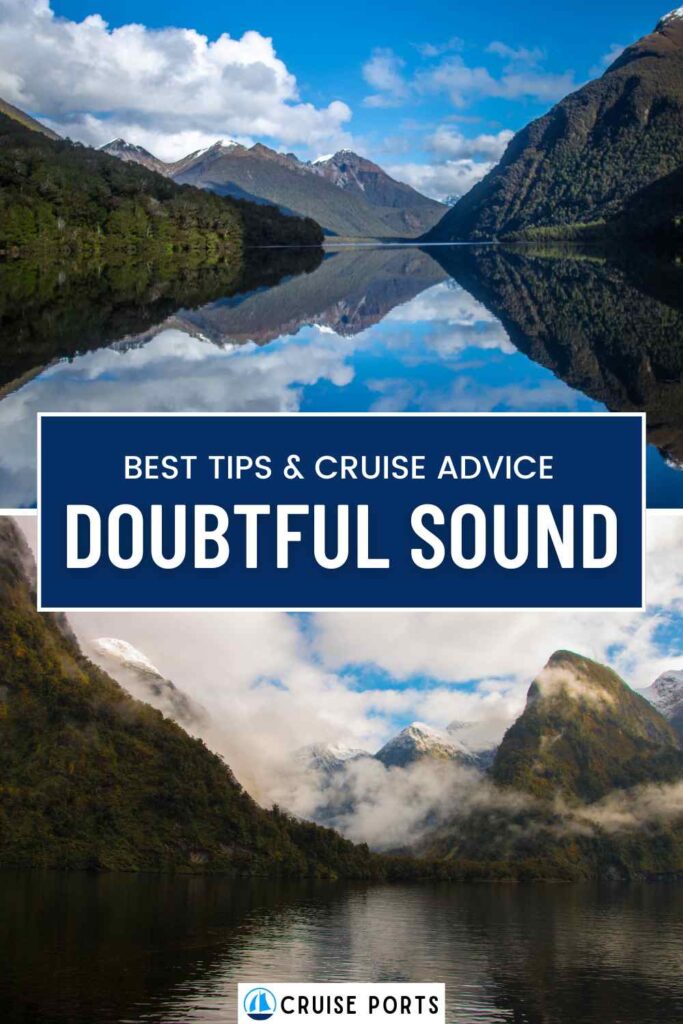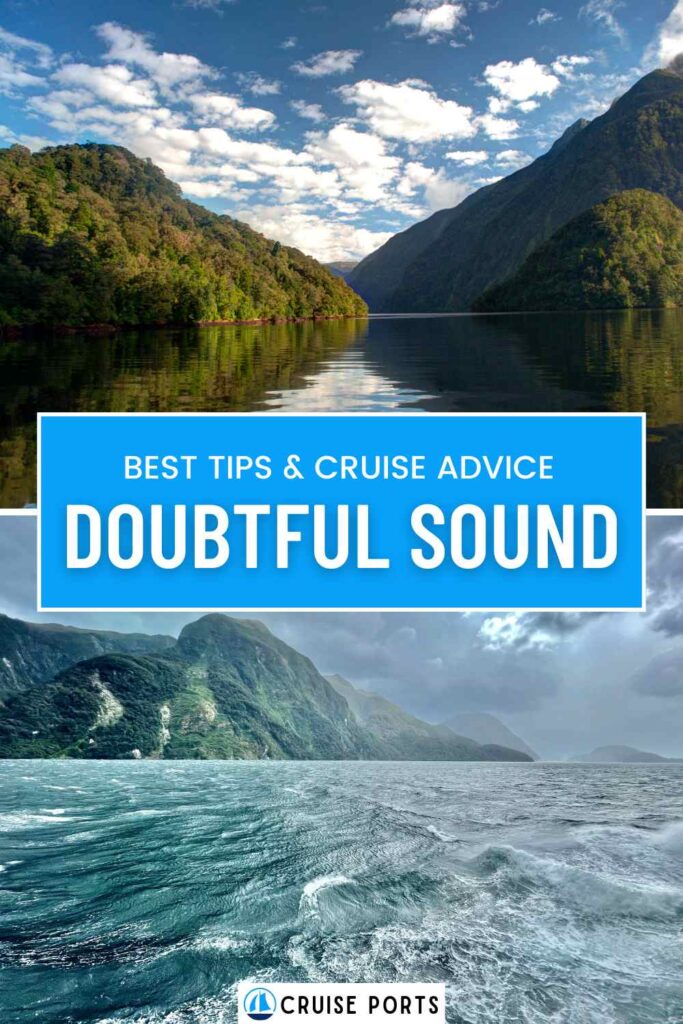Ready for an unforgettable escape?
Doubtful Sound, nestled in New Zealand’s Fiordland National Park, is a secluded haven bursting with natural wonders, rugged peaks, and serene waters.
This guide reveals everything you need to know to plan your dream cruise to one of the world’s most mesmerizing destinations.
Discovering the Majesty of Doubtful Sound
Doubtful Sound, often dubbed the “Sound of Silence,” is a spectacular fjord in the southwestern corner of New Zealand’s South Island.
This pristine stretch of Fiordland National Park remains largely untouched by human development.
Once you set foot—or anchor—into its mysterious waters, you’ll be greeted by steep cliffs covered in dense rainforest, cascading waterfalls that appear after every rainfall, and a quiet magic that envelops the entire region.
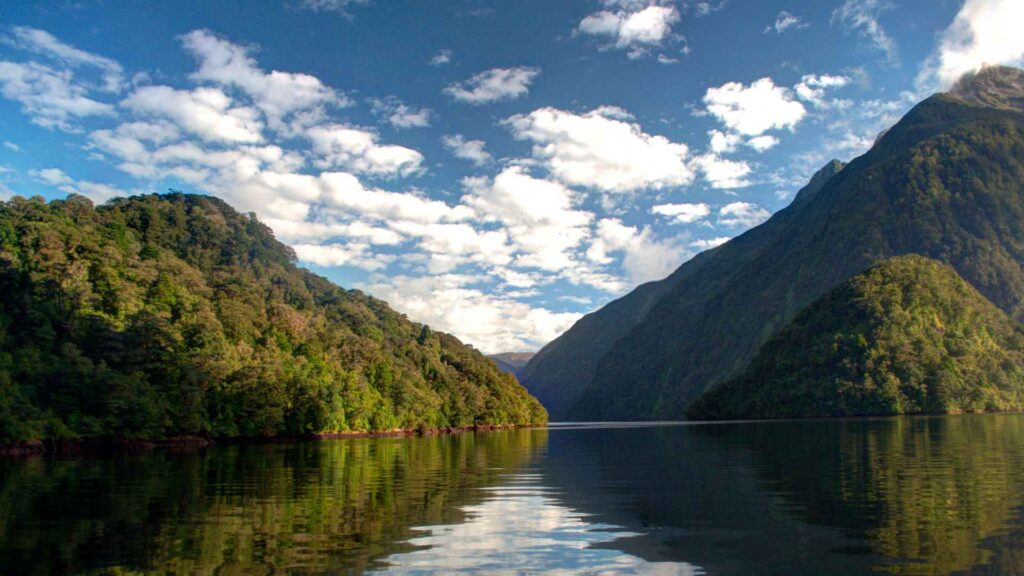
Location and Overview
- Off the Beaten Path: Unlike its more famous neighbor, Milford Sound, Doubtful Sound is accessible only by boat over Lake Manapouri, followed by a bus trip across the sub-alpine Wilmot Pass. The journey itself sets the stage for the serene beauty to come.
- Larger in Size: Interestingly, Doubtful Sound is both longer and deeper than Milford Sound, spanning 40 kilometers. Yet, it maintains an otherworldly silence that many travelers find even more enchanting.
- Protected Area: As part of Fiordland National Park, Doubtful Sound benefits from conservation efforts that aim to preserve its untouched wilderness. This means fewer crowds, more wildlife sightings, and the authentic feel of a place that hasn’t changed much over centuries.
Scenic Highlights
- Towering Waterfalls: Rain is common here, and that’s a good thing. Waterfalls sprout from every corner of the fjord during rainfall, making for a mesmerizing sight.
- Sheer Cliff Faces: The steep canyon walls are draped in thick native forest, creating a lush green tapestry. Early morning mists cling to the rock faces, lending the fjord a mystical ambiance.
- Emerald Waters: Keep your eyes peeled for resident bottlenose dolphins and fur seals gliding through the mirror-like waters. On a calm day, the surface reflects the surrounding peaks, creating picture-perfect moments at every turn.
Historical Significance
- James Cook’s Hesitation: The name “Doubtful Sound” was coined by Captain James Cook in the 18th century, who was uncertain if it was navigable by sail. He never actually entered the fjord, but his crew documented the region’s breathtaking potential.
- Māori Heritage: Long before European explorers arrived, Māori people ventured into Fiordland to hunt, fish, and explore the area’s resources. The names of various locations still reflect their cultural ties.
- Conservation Legacy: Doubtful Sound is a key part of New Zealand’s commitment to preserving its unique ecosystems. With limited human activity, it remains an ecological treasure.
Immerse yourself in the immense beauty of Doubtful Sound and you’ll soon discover why many consider it the crown jewel of Fiordland.
It’s that rare kind of place where nature takes center stage, and every inch is a reminder of the planet’s power and splendor.
Planning Your Journey
Before setting sail on your Doubtful Sound adventure, it’s crucial to plan carefully.
Because of its remote location, a bit of preparation will ensure you’re ready for anything this wild and wonderful place throws your way.
How to Get There
- Starting Point: Te Anau or Manapouri: Most travelers begin their Doubtful Sound journey in the town of Te Anau, a gateway to Fiordland. From there, it’s a short drive to Lake Manapouri, where the official journey to Doubtful Sound begins.
- Lake Manapouri Cruise: The first leg of the trip involves a boat ride across the serene Lake Manapouri. This crossing already feels like an adventure, with panoramic vistas of soaring peaks and unspoiled shorelines.
- Wilmot Pass Transfer: Once you arrive at the opposite side of Lake Manapouri, a shuttle bus takes you over Wilmot Pass. This scenic drive offers you your first dramatic glimpses of Fiordland’s forests, waterfalls, and towering mountains.
When to Go
- Year-Round Beauty: There’s really no “bad” time to visit Doubtful Sound. Summer months (December to February) bring longer days and milder temperatures, while winter months (June to August) offer crisp air, fewer crowds, and occasionally snow-capped peaks.
- Rainy Season Considerations: Fiordland is known for its high rainfall, which is responsible for those stunning waterfalls. Don’t be discouraged if the forecast says rain—it often creates a more mystical atmosphere. Pack your rain gear and embrace the weather.
- Peak vs. Off-Peak: Peak season typically aligns with the Southern Hemisphere summer. If you’re looking to avoid crowds, consider visiting during spring (September to November) or autumn (March to May). You’ll still get gorgeous views, but with fewer fellow travelers.
Ticketing and Reservations
- Advance Booking: Because Doubtful Sound is more remote than Milford Sound, tours and cruises can fill up quickly—especially in peak season. Book as soon as you know your travel dates.
- Choosing a Cruise Operator: Various companies offer day cruises or overnight options. Research their itineraries, onboard amenities, and environmental practices to find a cruise that matches your travel style.
- Budgeting: Prices vary based on the length of the cruise and the level of luxury offered. While day trips are often less expensive, overnight cruises allow you to soak in Doubtful Sound’s serenity under the stars.
With a solid plan, your journey to Doubtful Sound becomes more than a trip—it transforms into an immersive experience.
Getting there may take some effort, but the reward is an epic voyage into one of the most remote and awe-inspiring corners of New Zealand.
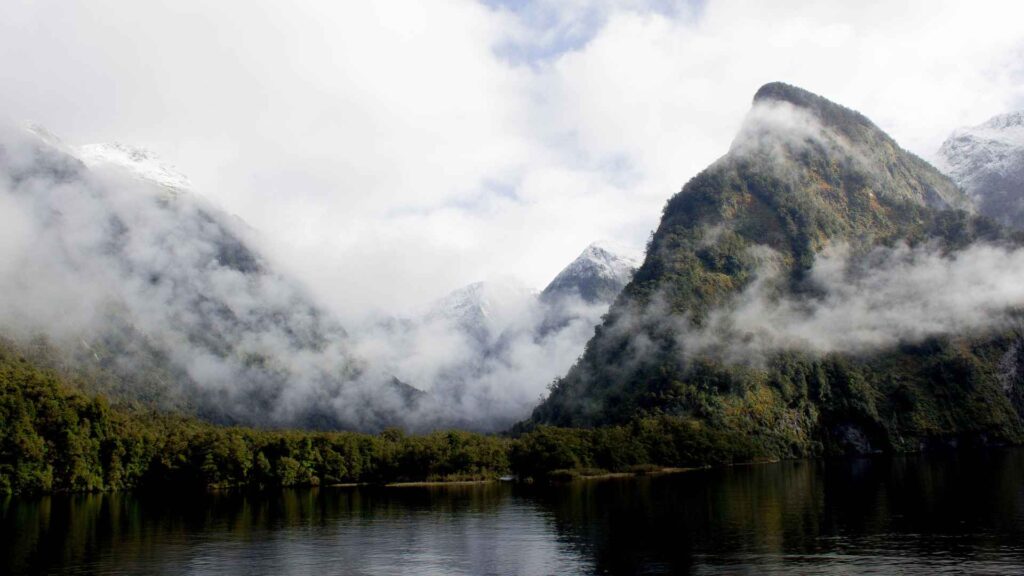
Activities and Excursions
Once you arrive at Doubtful Sound, a whole world of adventure awaits.
You can choose to explore the dramatic landscape from the deck of your cruise ship, or get up close and personal with the tranquil waters and lush rainforests surrounding you.
Guided Cruise Tours
- Day Cruises: Day trips typically last several hours and include transport across Lake Manapouri, the scenic bus ride, and the main cruise through Doubtful Sound. You’ll enjoy guided commentary about the region’s geology, wildlife, and history.
- Overnight Excursions: For a more immersive experience, consider booking an overnight cruise. As the sun dips below the horizon, Doubtful Sound transforms into a quiet haven of starlit skies and gentle waves. Waking up to the sound of birdsong in this untouched environment is a memory you won’t soon forget.
- Small vs. Large Vessels: Smaller boats often allow for more intimate wildlife encounters and personalized commentary. Larger vessels might include more amenities like spacious viewing decks and onboard dining. Decide which atmosphere best suits your style.
Kayaking Adventures
- Paddle Power: Feeling adventurous? Kayaking in Doubtful Sound puts you closer to the water’s surface, allowing you to appreciate the sheer scale of the cliffs and the abundant marine life below.
- Quiet Exploration: There’s something magical about gliding across the fjord under your own steam. Without the hum of an engine, you’ll hear only the water lapping against your kayak, birds calling from the forest, and the occasional splash of a dolphin or seal.
- Safety Essentials: If you’re new to kayaking or have kids in tow, book a guided kayak tour. They’ll supply the gear, safety instructions, and insider knowledge of the best spots to see wildlife.
Overnight Stays
- Fiordland Lodges: If you prefer staying on land, there are a few lodges and accommodations tucked away in Fiordland. While not directly on Doubtful Sound’s shores, they offer easy access to day cruises and other activities.
- Onboard Cabins: Overnight cruise packages often come with cozy cabins, complete with comfortable beds and an en-suite bathroom. There’s no better lullaby than the sound of gentle waves and the faint rustling of trees.
- Stargazing: Clear nights in Doubtful Sound can be spectacular, with virtually no light pollution. Stepping onto the deck after dark feels like stepping into another universe entirely.
No matter how you choose to explore, Doubtful Sound caters to both thrill-seekers and serenity-lovers alike.
Whether you’re looking to pack your day with adventure or lounge on deck taking in the views, there’s an excursion that fits your travel style perfectly.
Wildlife Encounters
One of the biggest highlights of Doubtful Sound is the opportunity to spot wildlife in its natural habitat.
Because of the sound’s remote location and conservation measures, you have a good chance of crossing paths with creatures both above and below the waterline.
Marine Creatures
- Bottlenose Dolphins: Doubtful Sound is home to one of the southernmost populations of bottlenose dolphins. They’re often spotted swimming alongside cruise ships, delighting passengers with playful flips and curious approaches.
- New Zealand Fur Seals: Seals can be seen lounging on rocky outcrops. They’re quite photogenic, so keep your camera ready.
- Penguins: If you’re lucky, you might glimpse the Fiordland crested penguin. Their distinctive crest of bright yellow feathers above each eye makes them a real treat to witness in the wild.
Birds and Land Animals
- Unique Avian Life: The forests surrounding Doubtful Sound provide habitat for many of New Zealand’s native birds, including kea (the world’s only alpine parrot) and other more elusive species like the mōhua (yellowhead).
- Rainforest Dwellers: Though much of the land is steep and forested, you may spot deer or other small mammals foraging at the water’s edge.
- Sounds of the Forest: Even if you don’t catch a glimpse of certain species, the chorus of bird calls, especially at dawn or dusk, adds to the enchanting atmosphere.
Conservation Efforts
- Protected Ecosystem: Doubtful Sound’s ecosystem is carefully managed to maintain its biodiversity. Strict regulations help ensure the region remains a safe haven for wildlife.
- Wildlife Guidelines: Operators follow codes of conduct around marine mammals, limiting speeds and maintaining respectful distances to reduce stress on animals.
- Responsible Tourism: Many cruise companies incorporate educational segments into their tours, teaching guests about local species, habitats, and the importance of preserving this fragile environment.
Encountering wildlife in Doubtful Sound is a humbling reminder that we share the planet with incredible creatures who thrive in places where nature rules.
Whether you spot a dolphin pod or hear the distant call of a kea, each moment spent with these animals adds a layer of awe to your Doubtful Sound adventure.
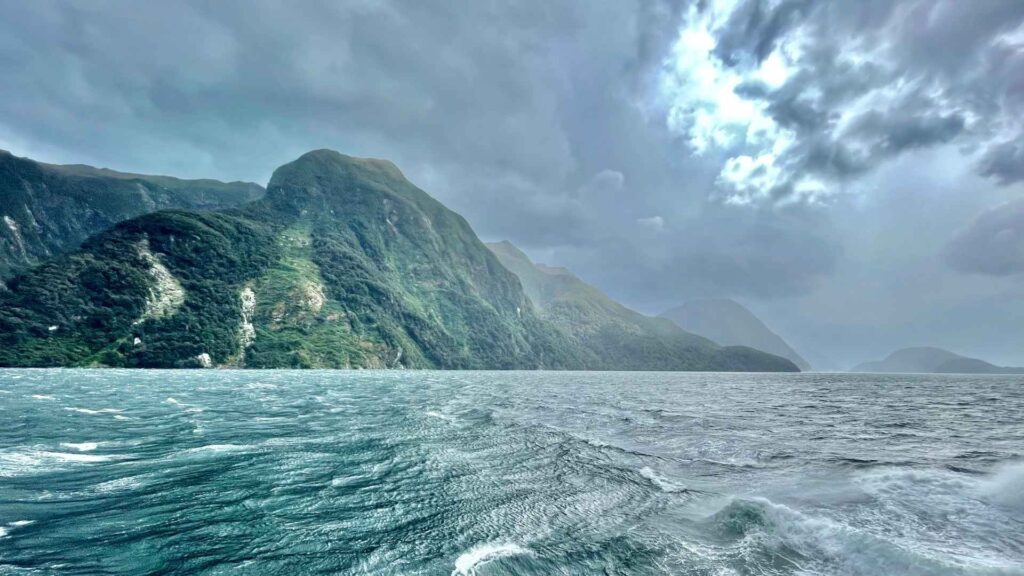
The Local Culture
While Doubtful Sound is all about pristine nature, the people and stories connected to this place add a rich cultural tapestry to your visit.
From ancient Māori legends to modern conservation champions, the cultural narrative here is as compelling as the landscapes themselves.
Māori Heritage
- Tales of Exploration: Māori have long considered Fiordland an area rich in resources. They journeyed through these waters in waka (canoes), fishing in the deep fjords and hunting in nearby forests.
- Place Names: Māori place names often reference the area’s spiritual and ecological significance. Learning the original names and their meanings can deepen your appreciation for the region.
- Respect for Nature: Māori culture teaches a deep reverence for the land and its creatures, emphasizing a kinship with nature that modern-day visitors can learn from.
Modern Community
- Remote Living: There are no permanent residents in Doubtful Sound itself, but surrounding towns like Te Anau have vibrant communities. Many locals work in tourism, conservation, or environmental research.
- Guides and Rangers: The people who operate cruises, lead kayak tours, or work as park rangers often hold a wealth of knowledge about Fiordland’s ecology and history. Don’t be shy about asking questions; they love sharing insights.
- Community Events: On occasion, local events celebrate Fiordland’s environmental milestones or cultural heritage. Check local listings if you’re spending extra time in Te Anau or Manapouri.
Cultural Etiquette
- Kaitiakitanga (Guardianship): A cornerstone of Māori values is the idea of kaitiakitanga, or guardianship of the land. As a visitor, you can honor this principle by leaving no trace, respecting wildlife, and following park guidelines.
- Engage with Locals: If you have the chance, engage with local guides or community members to learn about their lives in this part of the world. Fiordland can be harsh, but it breeds a resilience and passion for nature that’s truly inspiring.
- Appreciation Over Exploitation: Cultural respect means treating sacred sites and historical landmarks with care. Appreciate the significance of these places without disturbing their integrity.
By taking the time to understand the local culture, you’ll gain a richer, more meaningful experience in Doubtful Sound. It’s not just about breathtaking views; it’s also about connecting with the stories and traditions that shape this remarkable corner of New Zealand.
Packing and Preparation
Doubtful Sound’s remote wilderness demands a bit of forethought when it comes to what you bring.
A well-packed bag can be the difference between a comfortable journey and a soggy, chilly experience.
Weather Essentials
- Layer Up: Fiordland’s weather can change quickly. Wear layers that you can easily remove or add, from thermal underlayers to windproof jackets.
- Rain Gear: Waterproof jackets and pants are crucial, given Fiordland’s high rainfall. Choose breathable materials to stay comfortable.
- Footwear: Sturdy, waterproof shoes or boots will keep your feet dry on deck and during any onshore excursions.
Clothing and Gear
- Binoculars and Camera: Wildlife sightings can happen at any moment, so keep your camera or binoculars within arm’s reach.
- Insect Repellent: Sandflies can be particularly pesky in Fiordland, especially near the water’s edge. A strong repellent is worth its weight in gold.
- Reusable Water Bottle: Hydration is key, even when it’s cool. You’ll also be doing your part to reduce plastic waste in this pristine environment.
Budgeting Tips
- All-Inclusive Cruises: Some cruises include meals, snacks, and drinks in their pricing, which can simplify budgeting. Check what’s included to avoid surprises.
- Pack Snacks: If you’re going on a day trip, bring along a few energy bars or snacks. Food options may be limited once you’re on the water.
- Souvenirs: Keep an eye out for locally made products like wool clothing or artisanal crafts. They support the local community and make for authentic keepsakes.
With these packing tips in mind, you’ll be ready to tackle whatever Fiordland’s mercurial climate throws your way. After all, the drama of Doubtful Sound’s weather—glorious sunshine one minute, an atmospheric downpour the next—is part of what makes this destination so memorable.
Local Cuisine and Dining
While Doubtful Sound itself doesn’t have restaurants dotting its shores, your culinary experiences before, during, and after your cruise can still be remarkably rewarding. From hearty Kiwi classics to fresh-caught seafood, there’s no shortage of delicious fuel for your adventure.
Fresh Seafood
- Fiordland Crayfish: This delicacy is often prized among locals and visitors alike. If you have a chance, sample it in nearby towns or on your cruise if it’s on the menu.
- Blue Cod: Another staple in New Zealand’s South Island, blue cod is typically served fried or grilled. It’s a local favorite for good reason—mild, flaky, and delicious.
- Smoked Fish: Some eateries offer locally smoked seafood, which has a distinct, rich flavor reflective of Fiordland’s pristine waters.
Fiordland Favorites
- Venison: Deer hunting is common in the region. Venison dishes often feature locally sourced meat prepared in hearty stews or grilled to perfection.
- Lamingtons and Pavlova: These iconic Kiwi desserts can sometimes make an appearance on cruise menus or at local bakeries. Sweet treats are always welcome after a day of exploring.
- Coffee Culture: While Doubtful Sound itself won’t have barista cafes, nearby towns like Te Anau or Manapouri might surprise you with a decent flat white or latte to warm you up.
Where to Eat
- Onboard Dining: Most cruise operators provide meals or snacks, often featuring fresh, local ingredients. Day cruises might serve a light lunch, while overnight cruises can offer full-course dinners.
- Te Anau Eateries: If you’re staying in Te Anau, you’ll find a variety of restaurants and cafés catering to different budgets. Keep an eye out for menus showcasing local produce.
- Self-Catering: Another option is to stock up on groceries before you set off. This can be a cost-effective way to ensure you have your favorite snacks and dietary necessities on hand.
While the untamed wilderness of Doubtful Sound is the star of the show, don’t overlook the culinary side of your trip. Good food has a way of bringing people together, and sharing a hearty meal after a day out on the fjord is the perfect way to cap off your Fiordland adventure.
Cruise Logistics and Practical Tips
Doubtful Sound cruises often rank among the top experiences in New Zealand, and for good reason. To make your trip run smoothly, you’ll want to know a few practical details about onboard life, accessibility, and safety measures.
Onboard Amenities
- Seating and Viewing Areas: Most vessels have indoor lounges with panoramic windows, plus an outdoor deck for unobstructed views. Dress warmly if you plan to spend time outside.
- Food and Beverages: Cruises typically provide tea, coffee, or hot chocolate. Some include full meals or snacks, so double-check what’s provided.
- Restrooms: Modern cruise ships have clean restroom facilities, though they can be limited. Keep that in mind when planning any big coffee intake!
Accessibility
- Mobility Concerns: While many boats can accommodate travelers with limited mobility, be sure to confirm with your cruise operator ahead of time. Docking facilities at Lake Manapouri and the Wilmot Pass bus transfer also play a role in accessibility.
- Children and Families: Doubtful Sound can be a magical place for kids, but remember to pack suitable clothing, snacks, and entertainment for the journey. The remote nature of the trip means you’ll want to be well-prepared.
- Travel Insurance: Because weather can disrupt plans in Fiordland, consider travel insurance. If a sudden storm forces a cancellation or delay, you’ll be grateful for the peace of mind.
Health and Safety
- Weather Watch: Fiordland’s weather can shift rapidly. Cruise operators are well-versed in these patterns and adjust itineraries accordingly for guest safety.
- Seasickness: Though Doubtful Sound’s waters are generally calm, some travelers can still get queasy. Bring motion sickness remedies if you’re prone to seasickness.
- Emergency Procedures: Each vessel should have a safety briefing at the start. Take a moment to familiarize yourself with life jackets, emergency exits, and muster points.
By arming yourself with these logistics and practical tips, you’ll be fully prepared to enjoy every moment in Doubtful Sound.
This remote corner of New Zealand may require a bit more planning than other destinations, but that extra effort is rewarded with an experience few places on Earth can match.
